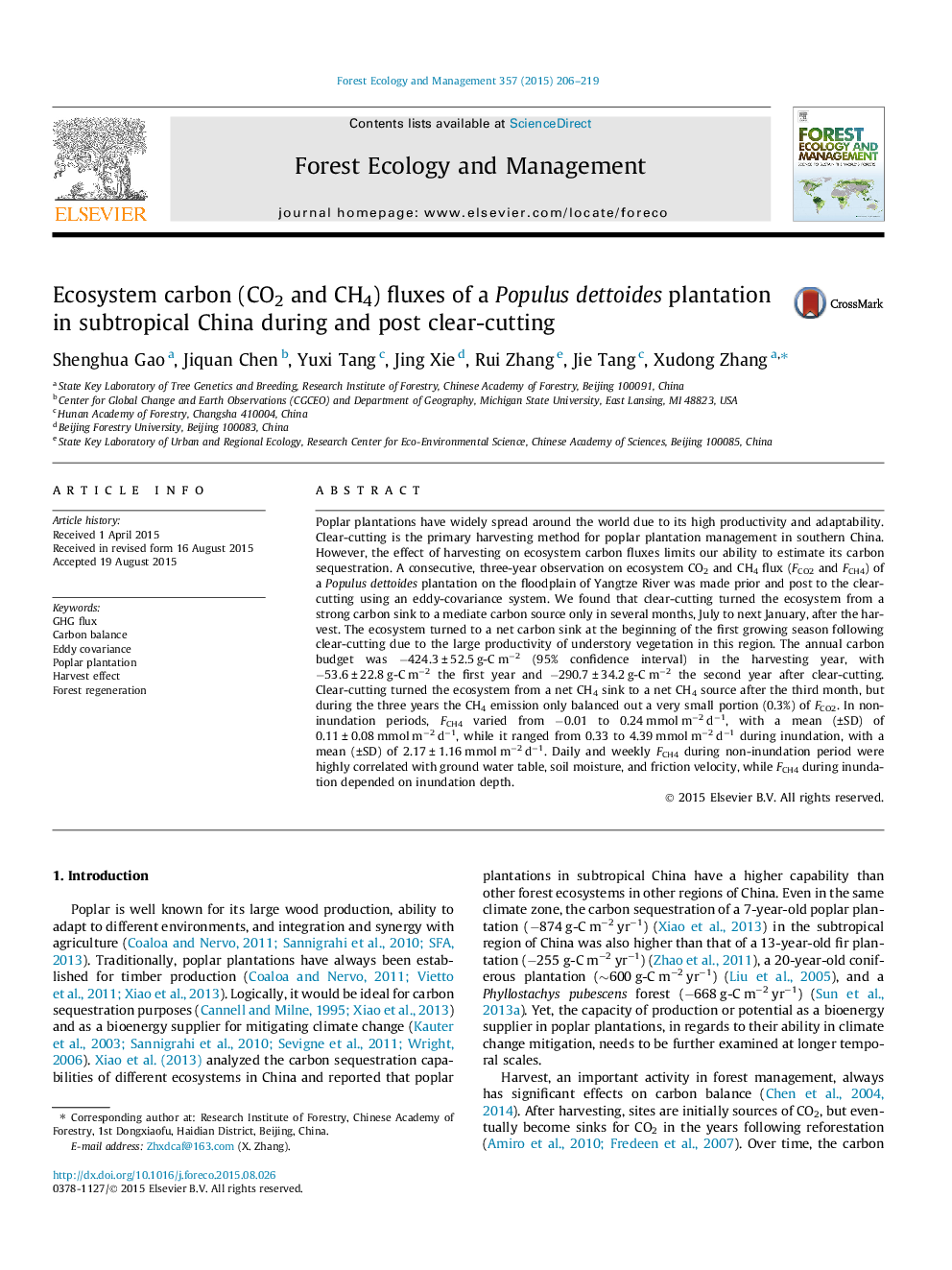| Article ID | Journal | Published Year | Pages | File Type |
|---|---|---|---|---|
| 6542723 | Forest Ecology and Management | 2015 | 14 Pages |
Abstract
Poplar plantations have widely spread around the world due to its high productivity and adaptability. Clear-cutting is the primary harvesting method for poplar plantation management in southern China. However, the effect of harvesting on ecosystem carbon fluxes limits our ability to estimate its carbon sequestration. A consecutive, three-year observation on ecosystem CO2 and CH4 flux (FCO2 and FCH4) of a Populus dettoides plantation on the floodplain of Yangtze River was made prior and post to the clear-cutting using an eddy-covariance system. We found that clear-cutting turned the ecosystem from a strong carbon sink to a mediate carbon source only in several months, July to next January, after the harvest. The ecosystem turned to a net carbon sink at the beginning of the first growing season following clear-cutting due to the large productivity of understory vegetation in this region. The annual carbon budget was â424.3 ± 52.5 g-C mâ2 (95% confidence interval) in the harvesting year, with â53.6 ± 22.8 g-C mâ2 the first year and â290.7 ± 34.2 g-C mâ2 the second year after clear-cutting. Clear-cutting turned the ecosystem from a net CH4 sink to a net CH4 source after the third month, but during the three years the CH4 emission only balanced out a very small portion (0.3%) of FCO2. In non-inundation periods, FCH4 varied from â0.01 to 0.24 mmol mâ2 dâ1, with a mean (±SD) of 0.11 ± 0.08 mmol mâ2 dâ1, while it ranged from 0.33 to 4.39 mmol mâ2 dâ1 during inundation, with a mean (±SD) of 2.17 ± 1.16 mmol mâ2 dâ1. Daily and weekly FCH4 during non-inundation period were highly correlated with ground water table, soil moisture, and friction velocity, while FCH4 during inundation depended on inundation depth.
Related Topics
Life Sciences
Agricultural and Biological Sciences
Ecology, Evolution, Behavior and Systematics
Authors
Shenghua Gao, Jiquan Chen, Yuxi Tang, Jing Xie, Rui Zhang, Jie Tang, Xudong Zhang,
